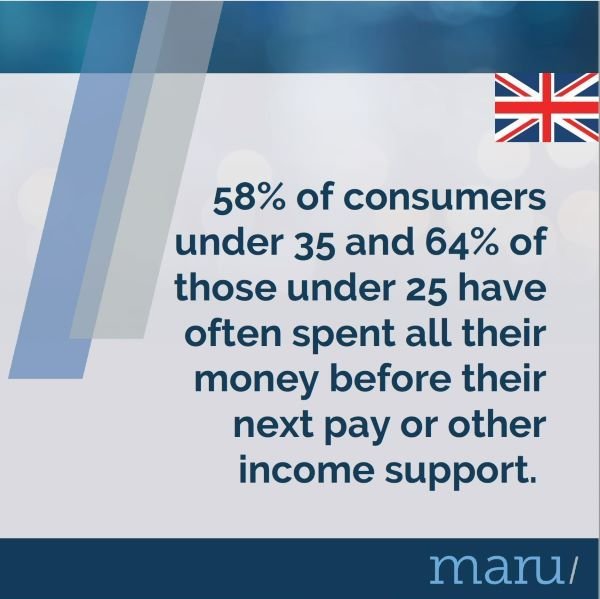BNPL users need more protection to avoid a looming crisis in the financial services sector
By Stephen Brockway, Chief Research Officer, Maru/Matchbox UK | January 24, 2022
Regulations are needed to protect vulnerable consumers from from growing BNPL debt.
With the recent explosion in buy now pay later (BNPL) products, many financial institutions have entered this high-growth, pre-regulation market. Millions of consumers have embraced these services to spread the cost of their online shopping.
Maru conducted a survey of U.K. consumers of these products polling members of Maru’s Voice UK online panel. The results make the case for bringing in immediate regulations to protect vulnerable consumers from a growing and unmanageable debt gap they will be increasingly challenged to repay—avoiding a repeat of the payday lending crises of 2018.
The study also revealed that regulators need to be more forceful in communicating with the public, as a majority (56%) of users assumed they were using a regulated product from the Financial Conduct Authority, and when told it wasn’t regulated, over eight-in-ten (83%) thought it should be.
Further, the findings point toward a potential perfect storm: while consumers are attracted by instant credit and gratification, they are doing so without the overarching affordability checks required by regulation for other credit products (loans, credit cards, etc.)—especially for an astonishing number of the youngest consumers who are piling up debt to bridge a real shortfall in income between paydays.
The case study of payday loans and Wonga is only a few years old and should act as a painful reminder of what happens when rapid lending growth is accompanied without the necessary regulation to protect consumers.
Many Gen Z consumers have often spent all their money before their next pay.
Who is using BNPL?
BNPL emerged in the findings as a popular means for many (27%) U.K. consumers who used the short-term financing service throughout 2021—with one-in-five (21%) specifically using it for their Christmas shopping.
The study found that the appeal of BNPL among consumers is widespread, with an average age of 35. However, that average belies the fact that a much greater proportion (43%) of the younger generation (aged 18-24) used BNPL in 2021, with almost half (21%) who specifically bargained to do so for their recent holiday season gift buying.
This lack of a regulatory cap on an expanding reality has resulted in a vast majority (84%) of the consumers who partake in these services having multiple agreements. Many of them are facing increasing challenges to repay the debts fully and on time—a most disturbing echo of the BNPL payment crisis looming in 2022.
To the point, the findings revealed that only six-in-ten (59%) of these consumers are ‘very confident’ in being able to meet their current obligations to paying on time. This drops to an even lower level (56%) of confidence to pay for those who are below the age of 35 with the same commitments.
Further, it appears that a vulnerable group of young customers are on a slippery slope into debt as they are tempted to spend more than they can afford for timely repayments: a sizable majority (64%) of 18–24-year-olds admit that they have often spent all their money before the next pay cheque or other income support. When the age yardsticks are moved just a bit, it reveals a similar situation for those aged 18-34 (55%), which in turn prompts many of that group (45%) to regularly use an overdraft facility on their account.
A majority of consumers have more than one BNPL agreement.
Where this is leading
Whilst for some consumers it may be a convenient way to break down their shopping payments into interest-free chunks, the rapid up-take by the younger generation who use the product as a financial stopgap reveals that vulnerable consumers may need more protection from signing up to more than they can afford.
Fintech companies will always point to their benevolent role in enabling access to easy credit through new open banking apps, but is this what the sector imagined when they envisaged the opening up of banking?
Methodology
These are some of the findings released by Maru Public Opinion from a survey undertaken December 10-13, 2021, by Maru/Blue of 1017 randomly selected U.K. adults who are Maru Voice online panelists. For comparison purposes, a probability sample of this size has an estimated margin of error (which measures sampling variability) of +/- 3.1%, 19 times out of 20. The results have been matched to the population according to census data which ensures the sample is representative of the entire adult population of Britain. Discrepancies in or between totals when compared to the data tables are due to rounding.
Contact us to learn how Maru can help you gain an understanding of your audience at an emotional level.



